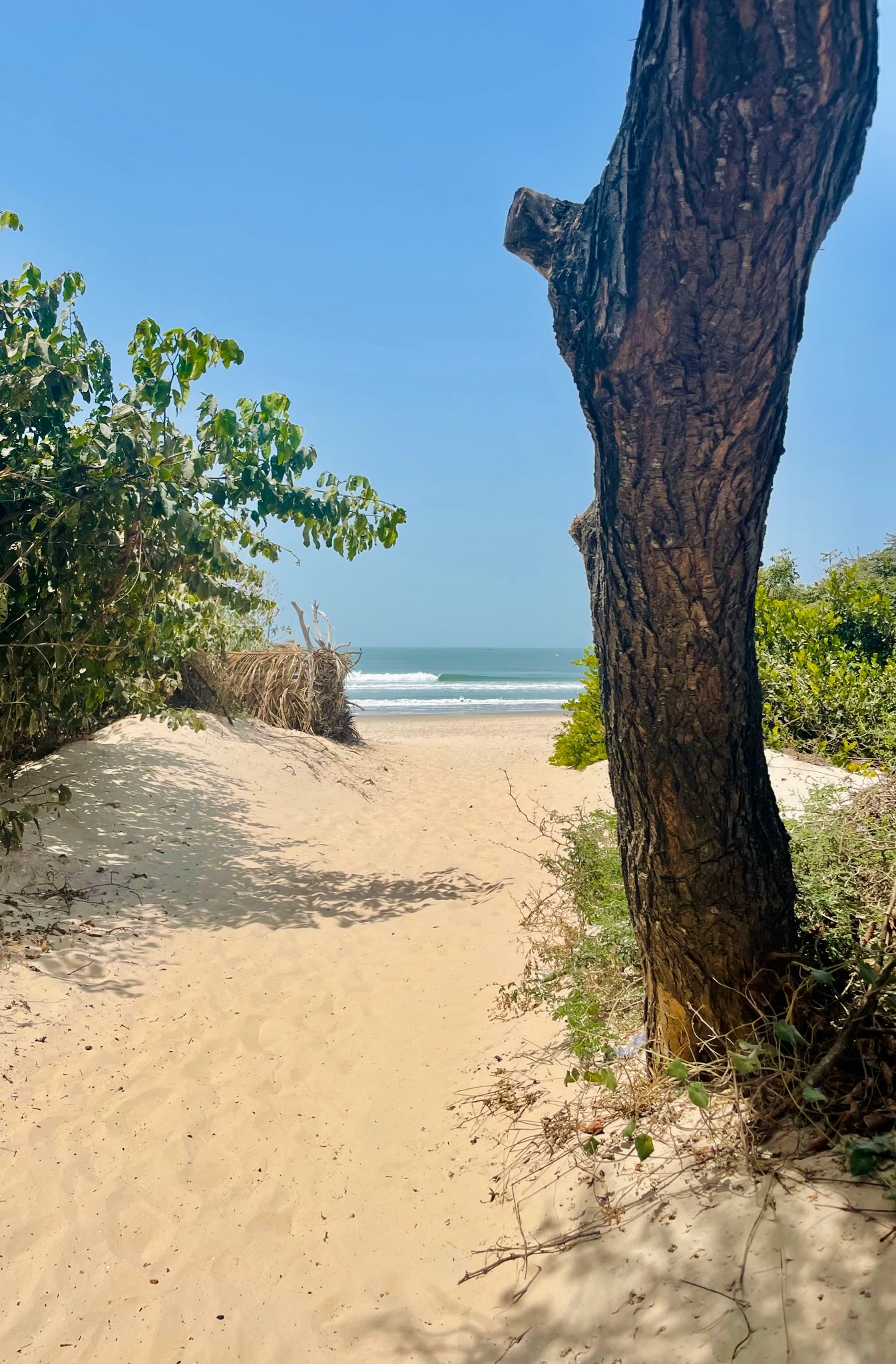So, you're ready to trade in your coat and thick wetsuit for a proper winter surf trip in warmer water? Forget about Nicaragua, Bali, or Morocco. Senegal is the winter surf gem that perfectly balances warm weather, beautiful waves, welcoming locals, and fantastic cuisine.
SURFING SENEGAL IN WINTER: GEAR UP FOR AN AUTHENTIC WEST AFRICAN EXPERIENCE
DATE: 24 MARCH 2024 #travel guideSo, you're ready to trade in your coat and thick wetsuit for a proper winter surf trip in warmer water? Forget about Nicaragua, Bali, or Morocco. Senegal is the winter surf gem that perfectly balances warm weather, beautiful waves, welcoming locals, and fantastic cuisine.
I spent almost three weeks in Senegal, from February to March, exploring Dakar and Basse-Casamance. I’ve been travelling for over a decade, but this country left me speechless. Three weeks felt like a year. I surfed incredible waves, savoured some of the most delectable dishes of my life, and was welcomed with open arms into the intimate homes of families in traditional Diola towns. Along the way, I crossed paths with extraordinary individuals—from taxi drivers to restaurant managers, artisans, museum guides, and street vendors.
Here's everything you need to know to live an incredible West African surf experience, including up-to-date information on how to travel within the country and a 2-week itinerary that combines cultural immersion, beautiful beaches, and great waves.
SENEGAL SURF TRAVEL GUIDE
Sun-Drenched, Adventurous Winter Surf Trip in Senegal: Dakar, Ngor Right & Casamance
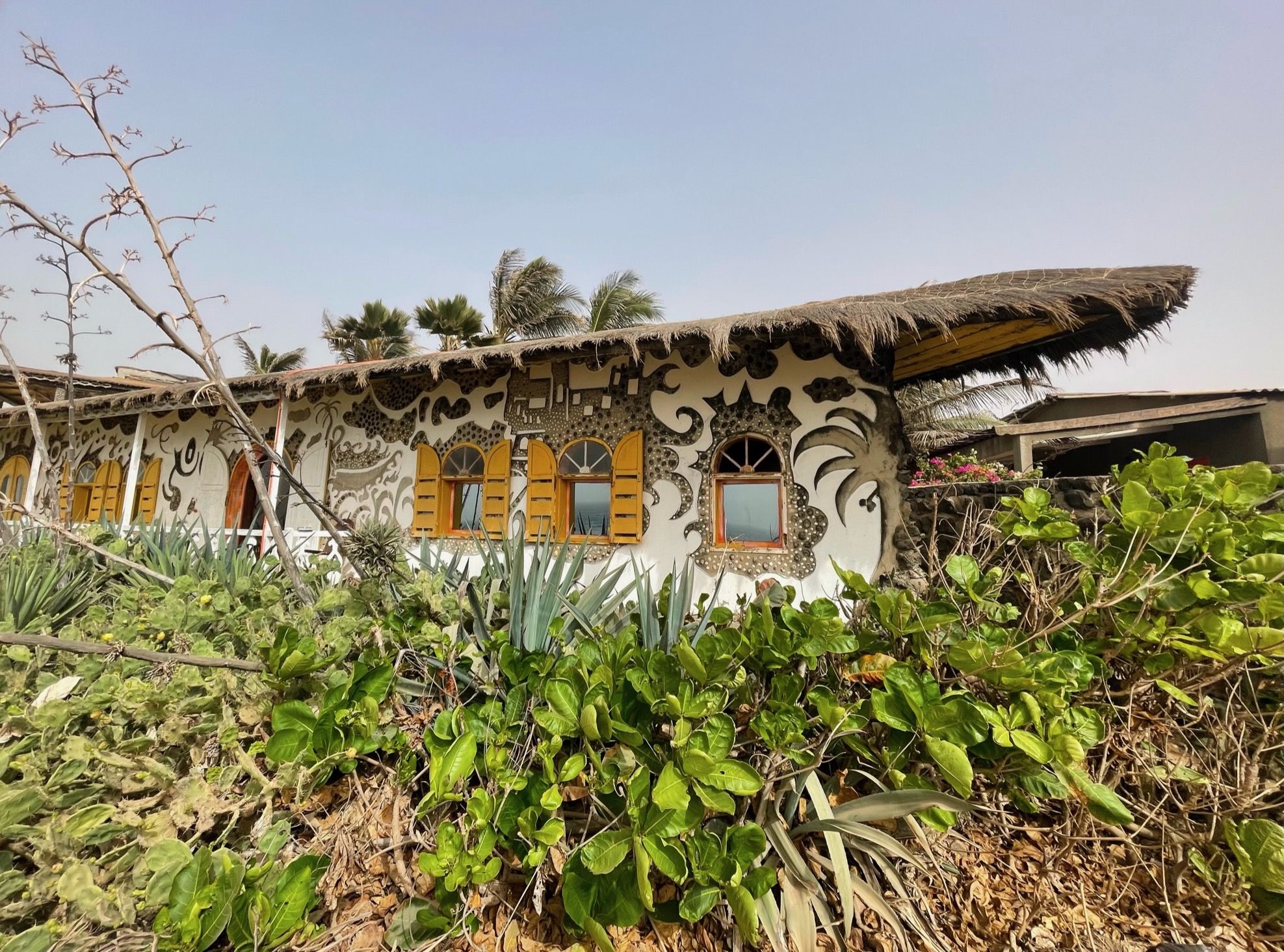 Ngor Island, Dakar
Ngor Island, DakarWhy is Senegal one of the best places to surf from December to February?
If you live in a region like mine where the water drops to 11°C in winter, I get why you're seeking to escape to warmer surf destinations. Shedding layers of neoprene until you're down to just board shorts, feeling the sun's warm embrace as you carve waves without the weight of gloves, a hoodie and pee-filled booties is any surfer's winter dream!
Senegal is an offbeat and ideal winter surf destination for a couple of reasons:
Great weather: The weather in Senegal from December to March is perfect: it's sunny almost every day, with temperatures hovering between 22 (at night) and 35°C during the day.
The water is around 18-22°C in the Dakar region and around 26°C in Cap Skirring. So it's warmer than Morocco or Lanzarote, with fewer crowds. You'll need a 3/2 wetsuit with reef booties and a swimming suit/board shorts in Cap Skirring.
Great surf: Senegal boasts a diverse range of breaks suitable for most levels. Plus, with (slightly) fewer crowds than neighboring surf meccas, you can practice your skills with peace of mind.
Great scenery and culture: Looking for a change of scene? Nothing beats combining great waves with delicious food, authentic cultural experiences, and welcoming locals. Whether you're sharing waves in the lineup or stories over a cup of tea, you'll quickly discover that Senegalese's hospitality is unmatched.
Close to Europe: To top it off, getting to Dakar from Europe is relatively easy. There are direct flights from Bordeaux, Paris, and Madrid, with Transavia and Iberia offering the cheapest flights. Although more expensive than Morocco or the Canary Islands, it'll cost you much less than visiting other warm winter surf destinations such as Nicaragua or Bali.
When's the best time to surf in Senegal?
The best time to surf in Senegal is in winter during the dry season, from November to March. Waves can be knee-high to double overhead, and the surf season starts in October when the North Atlantic swells start pumping.
- Best time to surf in the Dakar region: October through April sees the Dakar region come alive with consistent swells and favourable winds. The climate is subtropical, dry, warm, and sunny, but there's often a cool breeze at night. The air temperature varies between 24 and 32°C in the daytime, although the ocean can vary between 18 and 24°C, so on some days a wetsuit is required.
- Best time to surf in Casamance/Cap Skirring: Venture south to Casamance for wild beach breaks away from the crowds. Chase Western or Southern swells and go there when a big swell hits the coast; otherwise, the waves will likely be too small or blown out. In winter, temperatures typically range from around 22 to 36°C, providing the perfect conditions for surfing and exploring the region's natural beauty and unique culture. The water temperature hovers around 26°C, and even without waves, the beaches in Cap Skirring are a dream to swim or body surf in.
Where to surf in Senegal? A mini guide by region
Senegal's geography is great for surfing as the surf spots are along the coast from the North to the South of Dakar; you’ll find waves when there's both northern and southern swells.
Surfing Dakar in winter, Senegal
Surf spots in Dakar
The Almadies peninsula is where most of Dakar's surf spots are concentrated. It receives swells from multiple directions, so it works consistently. Choosing a Airbnb’ in this area will make it easy to access multiple surf spots. You'll find:
- Ouakam: an exposed reef break with perfect waves when it's working.
- Vivier: a shallow reef break with a beautiful right and a fast left. Rocks are prominent. Beware of sea urchins.
-
Secret: right next to Vivier, a mellow(er) wave suitable for beginners.
-
Club Med: heavy barrels in front of the older Club Med.
-
Virage and Yoff: two beach breaks with friendly waves (except when there's a big swell), ideal for beginners.
- Ngor Island: it deserves its own travel guide, which I’ve included below.
Is Senegal a good destination for beginner surfers?
If you've never surfed before or if you’re just beginning your surfing journey, Senegal isn't the best place to learn how to surf in winter because of hazards (rocks, shallow water, urchins, strong currents) and limited options when the waves get big.
Where can I rent boards in Dakar?
You'll find some surf shops in Almadies where you can rent boards. Board rentals cost anywhere from 6€ for a half-day to 10€ a day.
Getting to Dakar and moving between surf spots
Dakar is a hectic city—and it's a spectacle to watch! Most cars are run-down, taxis are rusty and look like they haven't been properly checked since the 60s, and accidents happen constantly. Traffic jams are a rite of passage and can seriously derail your plans. Navigating the city streets can be an adventure in itself, with unexpected twists and turns around every corner. So, if you plan to explore Dakar, factor in some extra time for potential mishaps.
To access different surf spots in Dakar, you can:
- Rent a bike if you stay in a place close to a surf spot, but you may die on the way.
- Take a taxi—just raise your hand like in New York. There are plenty of taxis in Dakar. Be prepared to negotiate the fee. Ask the hotel/Airbnb’ owner first for the standard prices to travel from one place to another. This will give you an idea of what to expect. Taxi drivers usually quote a price much higher than the regular fare.
 A map of Dakar’s surf spots via Surf Report. Yellow=Beginner, Red=Intermediate, Purple=Expert
A map of Dakar’s surf spots via Surf Report. Yellow=Beginner, Red=Intermediate, Purple=ExpertHow to get to Dakar from the airport?
You have a couple of options. You can:
- Book a transfer with Papé. He's a fantastic driver and person all-around with a great sense of humour and speaks French and English. Reach out via WhatsApp: +221 78 521 21 53
- The fee to get to Dakar from the airport is around 25000 CFA (38€), whether you book a taxi in advance or take a taxi outside the airport.
- Take the public bus. It costs 10000 CFA (12€). But keep an eye on your GPS/Google Maps to know when to get out. If you travel with surfboards, booking a transfer in advance will be more convenient.
How long does it take to get to Dakar from the airport?
It depends on where you stay, as Dakar is a huge city, but getting to areas like Ngor and Yoff can take anywhere between one and three hours. It depends on whether there's an accident, if it’s around rush hour, or if a politician is passing by, in which case the army will close down many of the main roads.
💡Rush hours in Dakar are around 5PM; plan in advance if you don't want to miss your return flight.

Moving around in Dakar
Where to stay in Dakar?
Accommodation in Dakar is costly, especially if you're travelling solo. I shared a room with my friend in Dakar and on Ngor Island, and we paid between 25 and 30€ per night. Looking for accommodation options? Check out my Senegal winter itinerary.
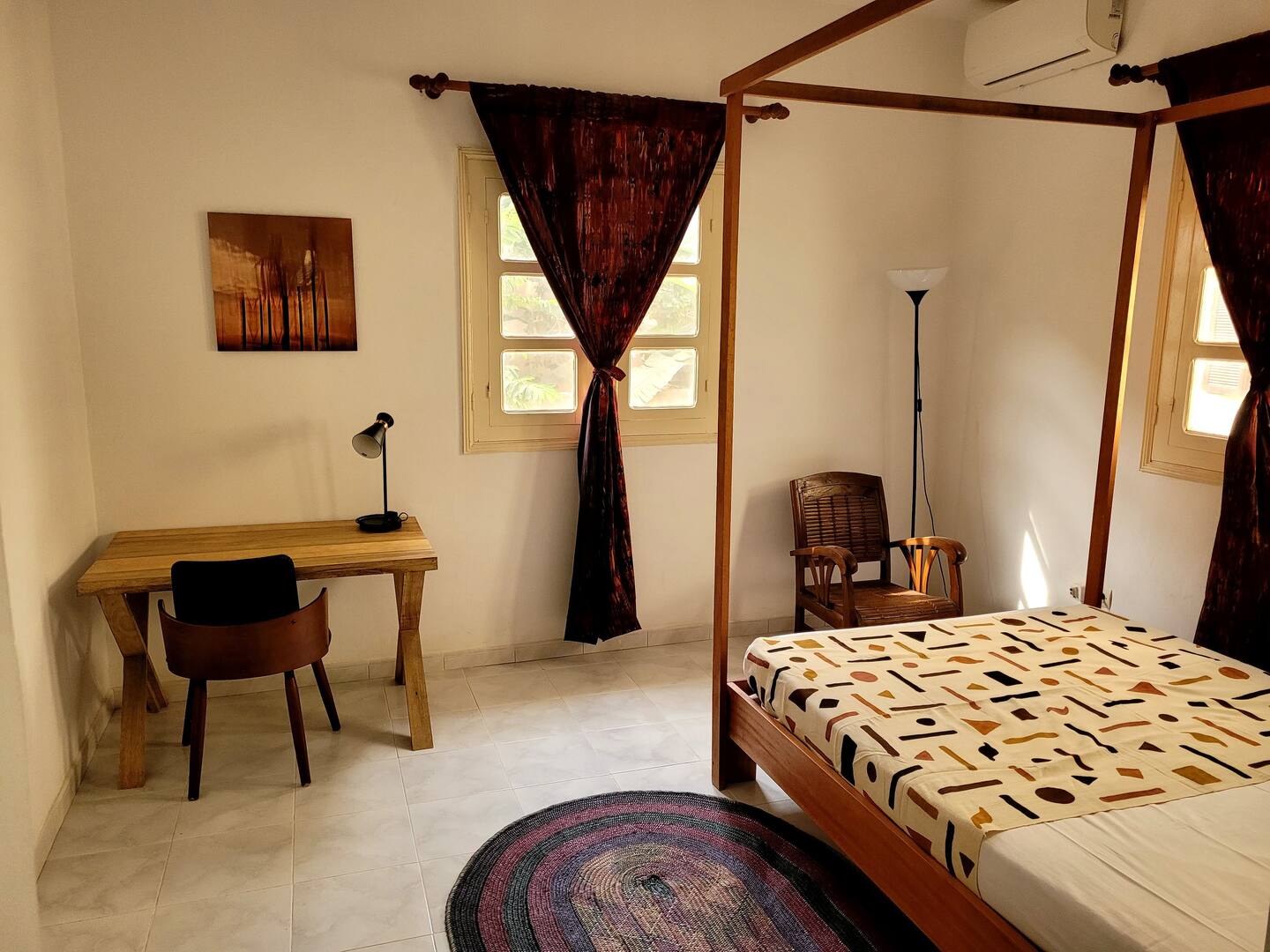
Surfing Ngor Right, Ngor Island, Senegal
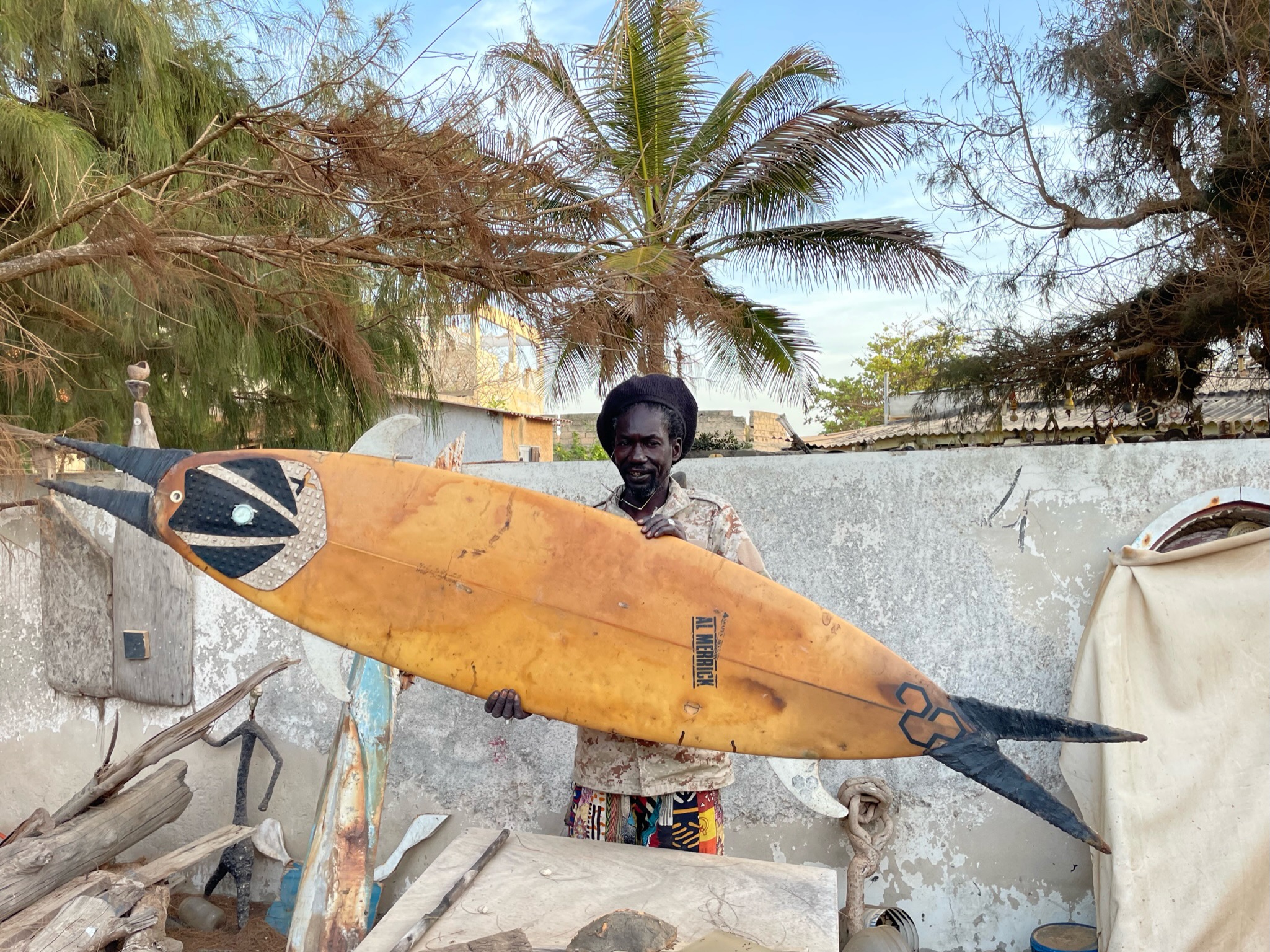
@thiammortalla281, a talented local artist on Ngor Island
Ngor Island is a little piece of paradise 10 minutes away from Dakar. I stayed one week on this island and could have easily stayed more.
When you arrive, you'll see a completely different landscape. The streets are car-free, the water is crystal clear, and every house and street has its own unique creative flair. On one side of the island stands the misty, sandy Dakar, and it feels surreal to soak up the sun on a gorgeous beach and surf while facing the run-down neighbourhood of Ngor. On the other side of the island, facing the Atlantic, you'll see fishermen’s pirogues speeding through the rough ocean towards the horizon.
If you're seeking a peaceful location while exploring the Dakar region, consider Ngor Island as your base. You can surf in the morning and plan your excursions in the afternoon (or vice versa).
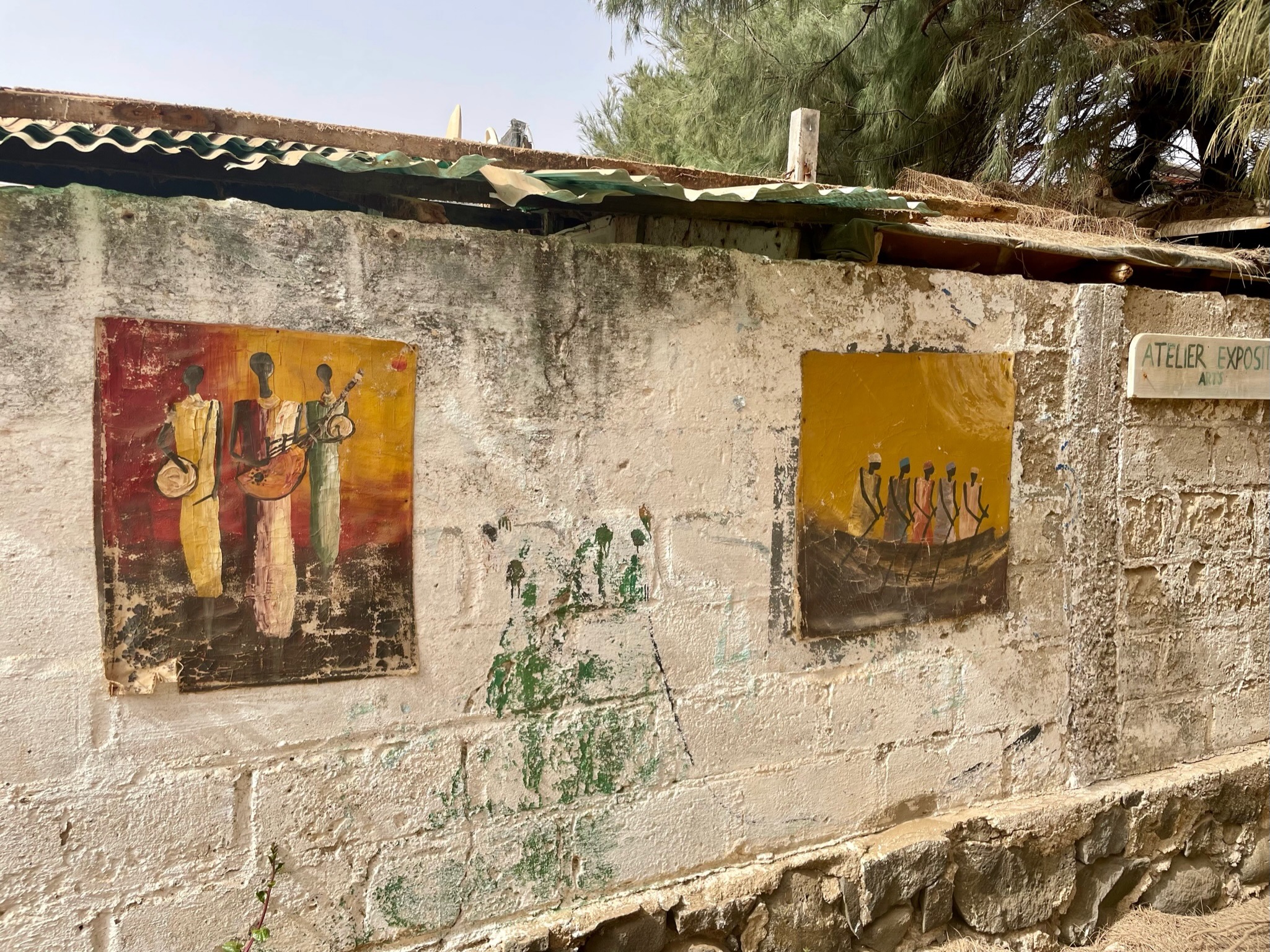


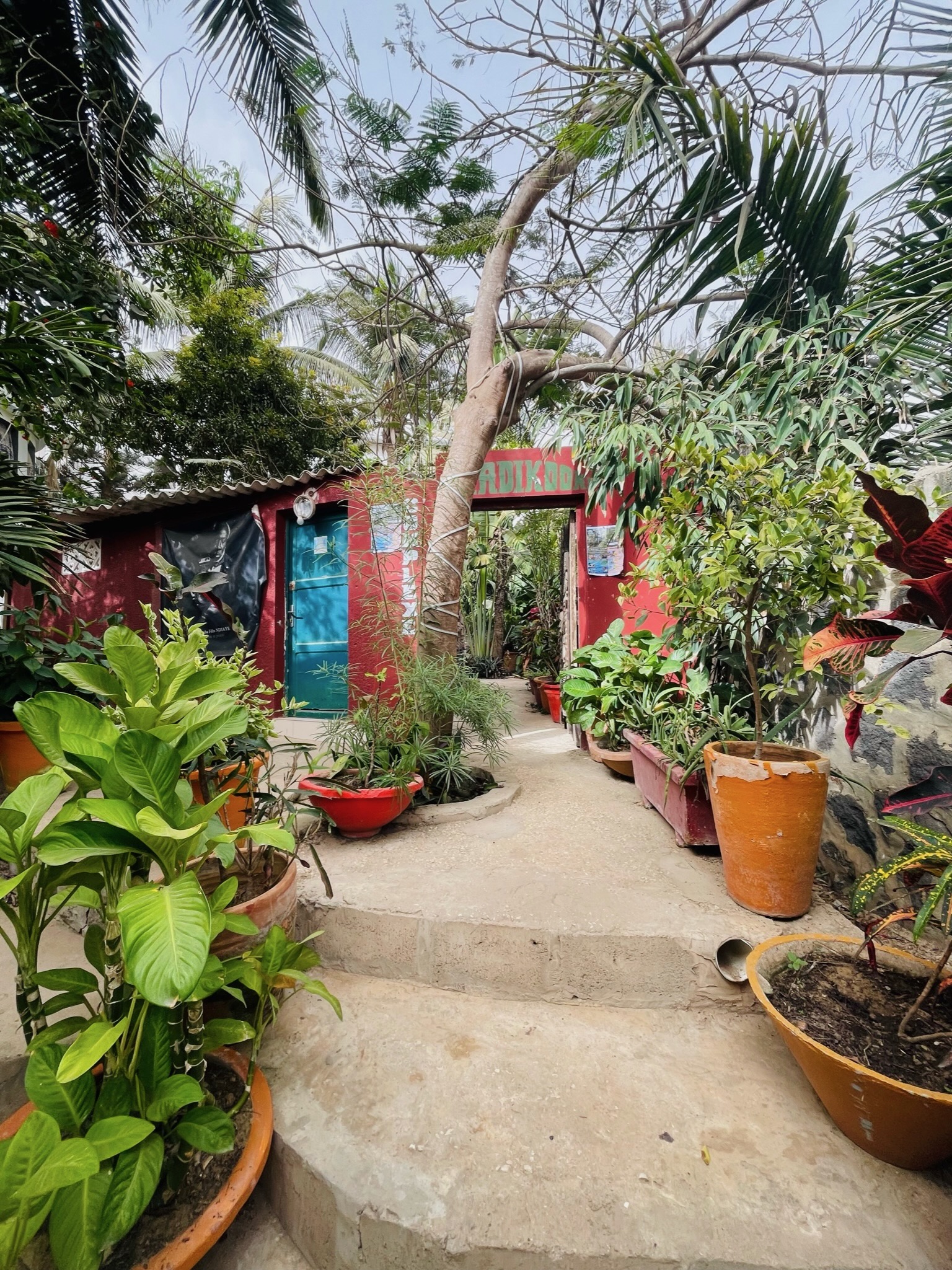

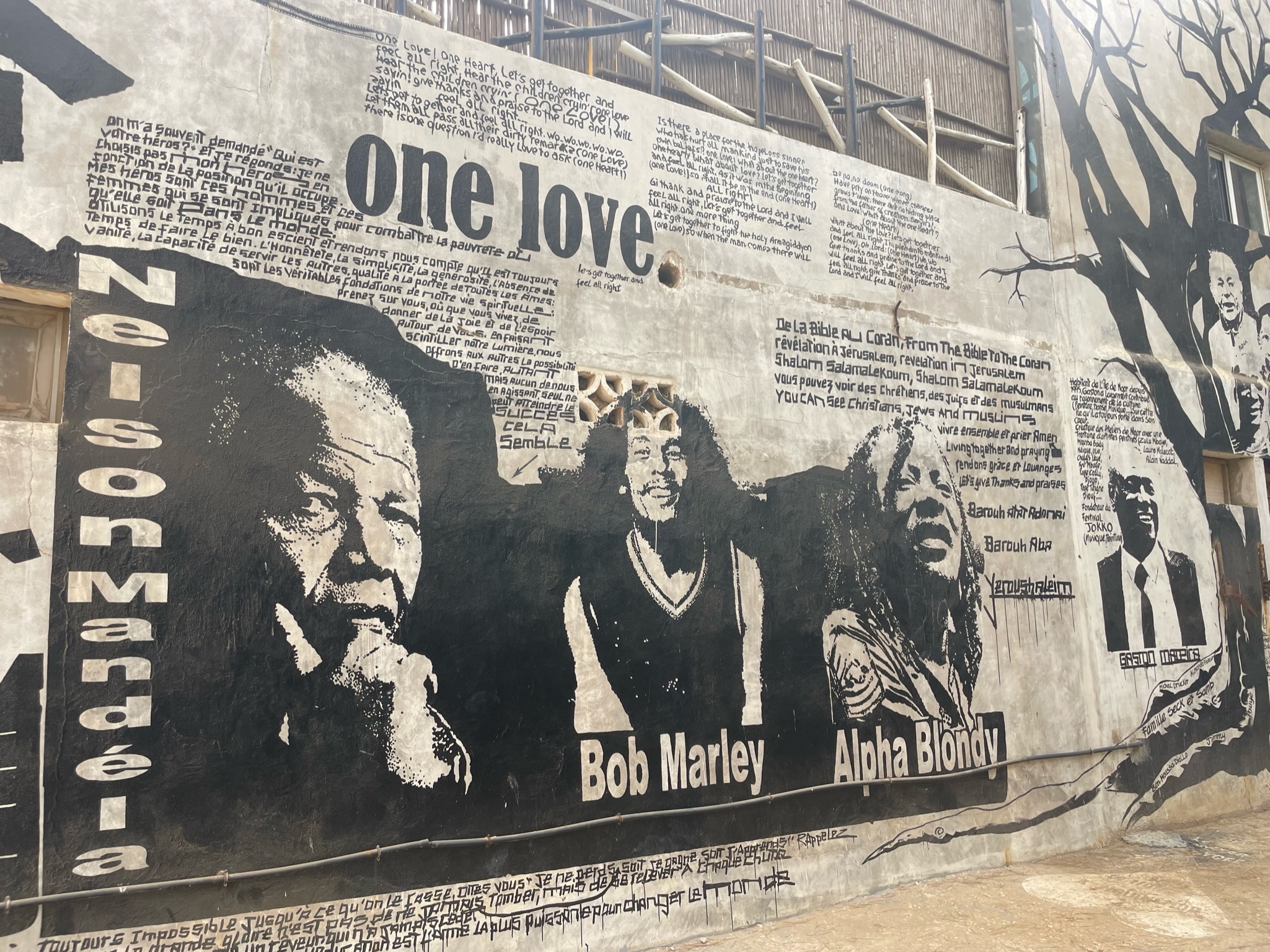
Where to surf on Ngor Island?
Ngor Right: Ngor Right is Senegal's legendary point break. It was even featured in the first Endless Summer movie. It's a long right that breaks over a reef and can hold massive swells. Because of its location, it's sheltered from the wind and works frequently. Be careful of the rocks at low tide. You can access the spot by boat or paddling from a small beach on the island. Expect crowds.
Ngor Left: This one wasn't working when I was on Ngor Island. But on good days, people say it’s a powerful left that'll make any goofy footer's day.
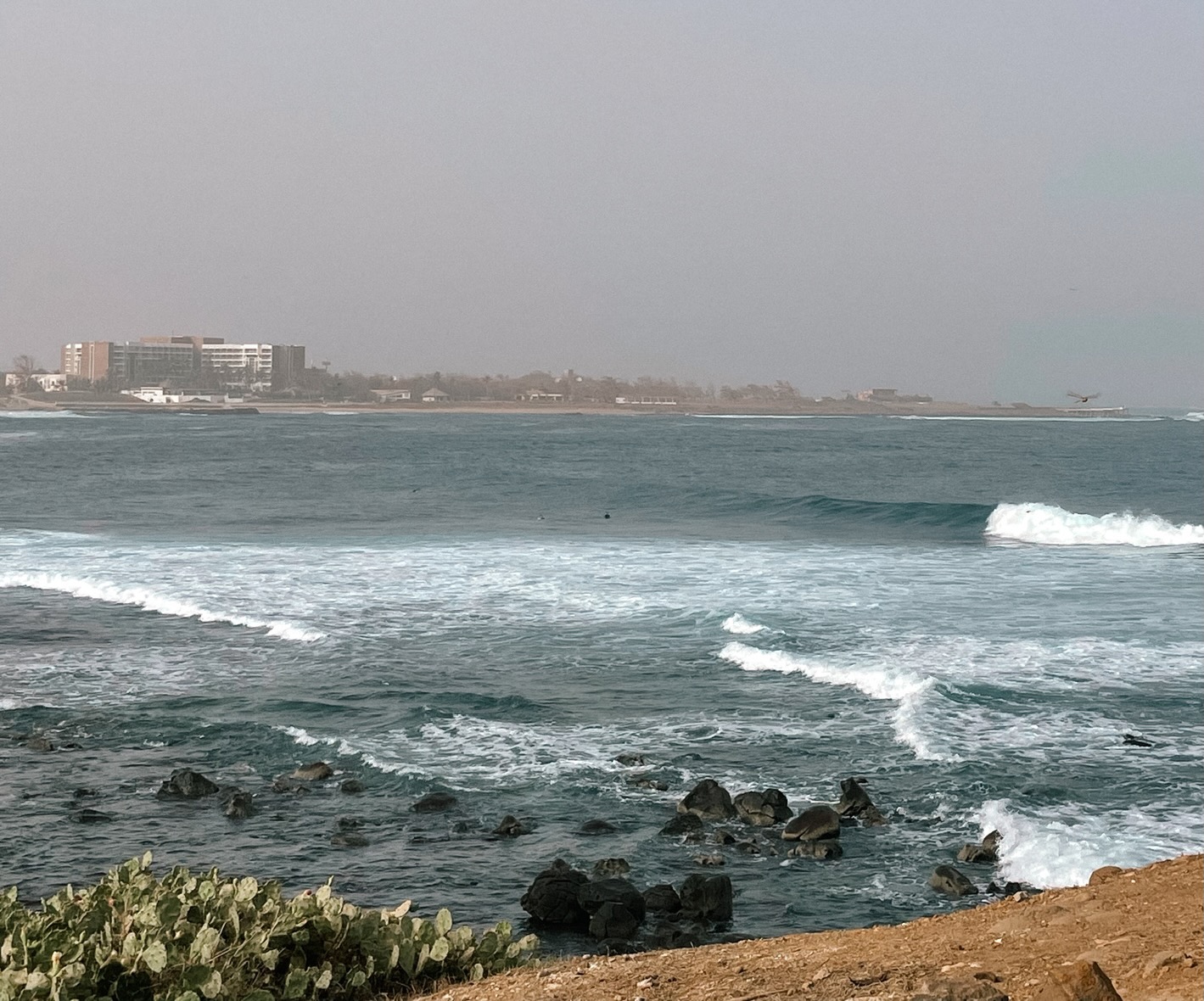
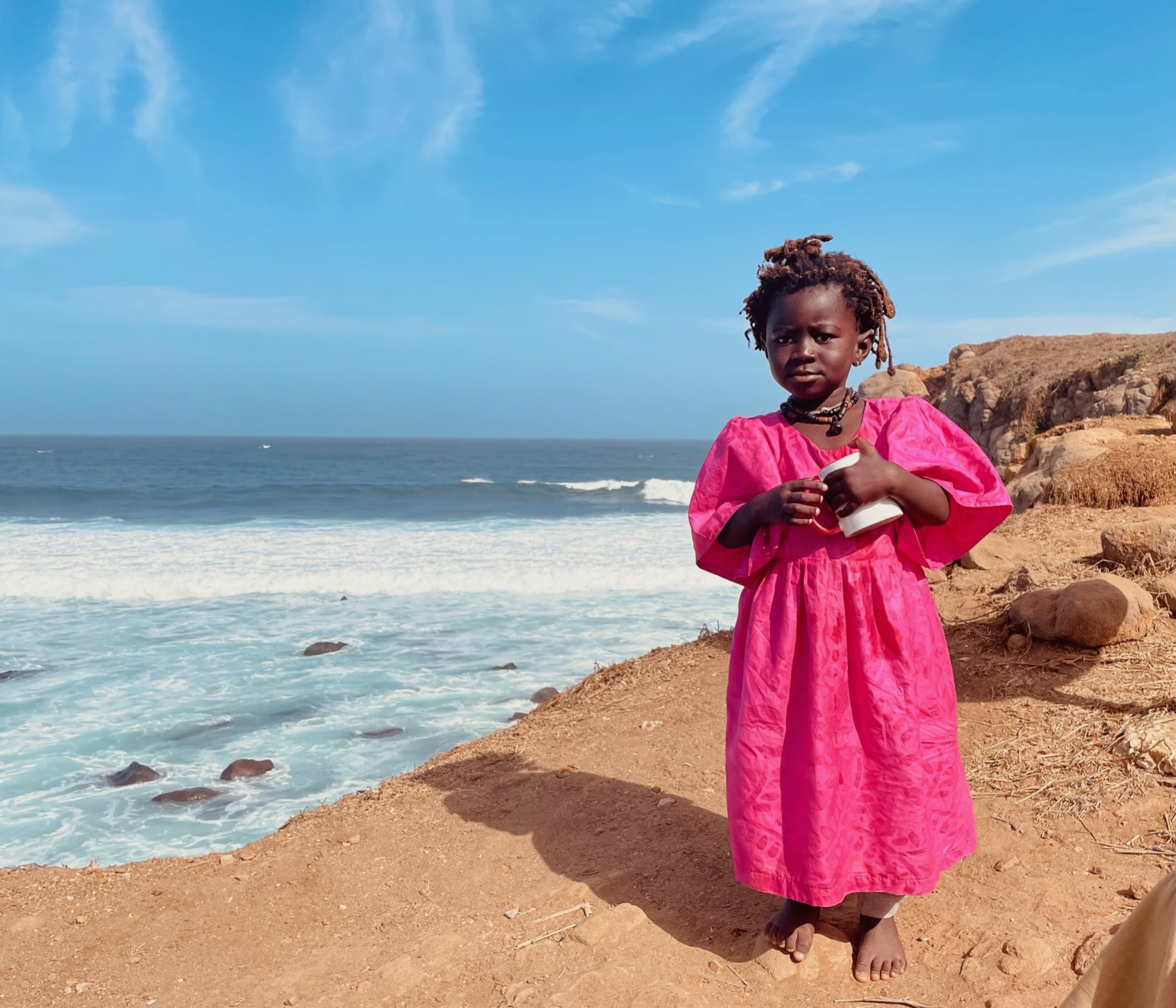
You’ll probably meet this legend when watching the waves at Ngor Right. She has plenty of stories to keep you entertained!
💡Renting surf boards on Ngor Island: There's no surf shop on the island. But there are two surf camps/surf houses, so if you're not staying there, you might need to contact the owners and ask if you can rent a board. Otherwise, if you're staying in a surf house, you'll be able to rent boards.
Where to eat on Ngor Island?

Ngor Island has many affordable and delicious restaurants that offer outdoor dining. My favourites were:
-
La Pépinière: A small restaurant hidden on the island where you can enjoy a traditional Senegalese meal for only 1500 CFA (2€), or have some delicious fried fritters as a snack. The restaurant owners are friendly, and the atmosphere is perfect for those who prefer a peaceful environment away from the crowds.
-
Oasis de la Petite Plage: Head there for one of the best mafés of your life. Take it with chicken at lunch before taking a pirogue to explore Dakar.
-
Restaurant Yadikoon: My favourite spot for dinner, feet in the water. Chat with the servers to discover their stories and culture.
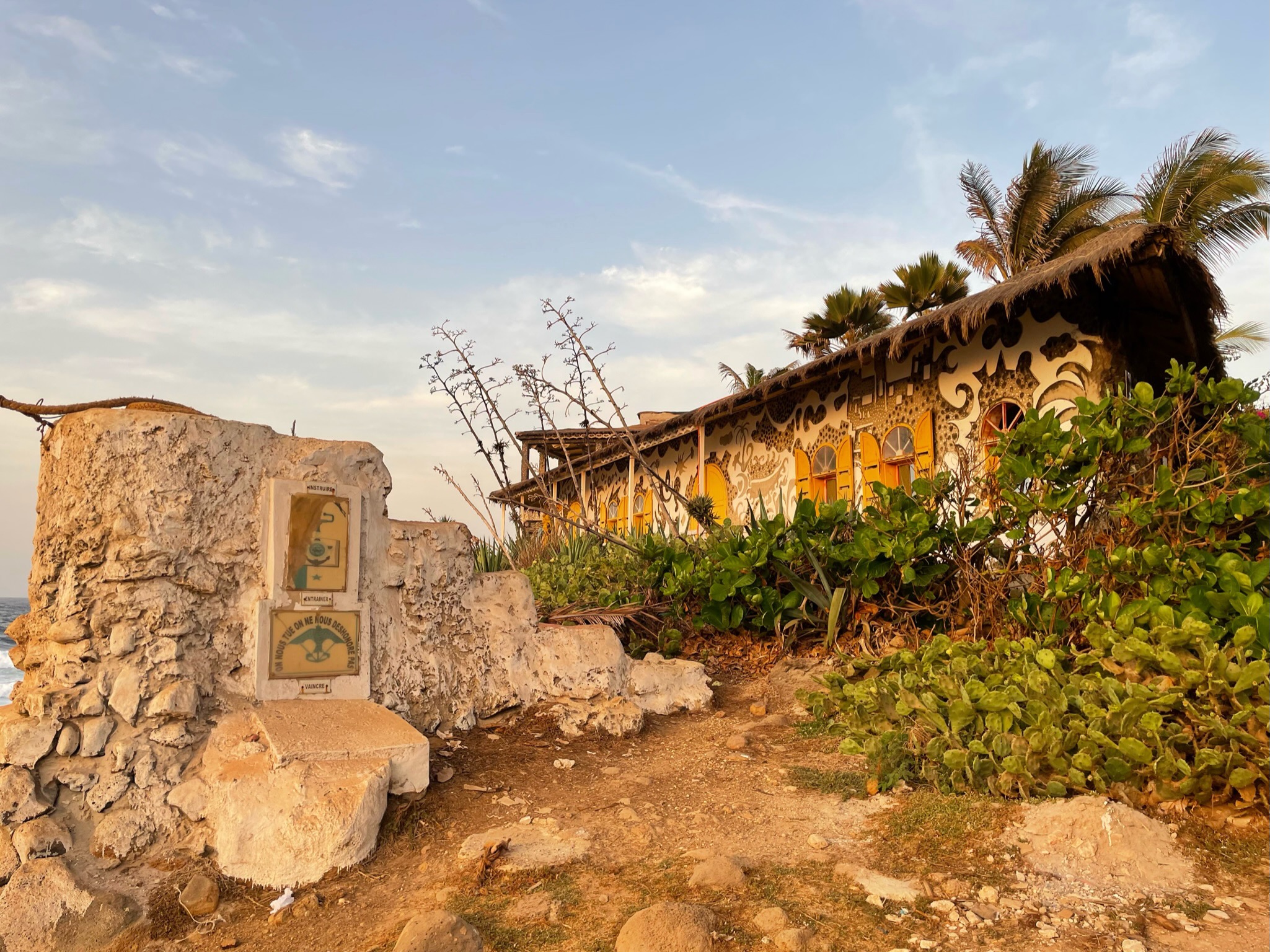 Stroll around barefoot and you'll find artsy houses and West African art on every street.
Stroll around barefoot and you'll find artsy houses and West African art on every street.How to get to Ngor Island from Dakar?
Ngor Island is about 5 minutes away from Dakar. You can get there by taking a pirogue or a boat. Don't worry about finding them - the people selling tickets will find you first, especially if you're a backpacker. Boats and pirogues leave every 10 minutes or so, and are available at night, even when there's a big swell. Tickets come with a return journey. They cost between 1000-1500 CFA (1.5-3€).
💡We took a pirogue at night during a big swell and almost fell off the boat. So protect your valuables in a plastic bag; you never know.
 The “port” facing Ngor Island
The “port” facing Ngor IslandWhere to stay on Ngor Island?
Ngor Right Surf House: This surf house is located right next to the waves. Just a few meters from your room, you can enjoy your morning coffee while looking at the waves. The owner is friendly and welcoming, and you can take coaching sessions to improve your skills. It's one of the few places in Dakar with shared dorms, perfect for solo travellers on a budget.
Book your stay at Ngor Right ︎︎︎
Ask the locals: You can chat directly with locals to rent a room.
Ngor Surf Camp: This is an all-inclusive surf camp where you get surf safaris, boat transfers, meals, and lessons, which are included in your fee.
Visit my Senegal surf trip itinerary to discover what to do when you’re not surfing in Dakar or on Ngor Island.
Surfing Cap Skirring, Basse-Casamance, Senegal
![Surfing Casamance in winter, Senegal]()
A tiny wave revealing how epic waves can get in Cap Skirring when the conditions reuniteIf you're chasing waves and it's too big in Dakar, you might get lucky and find perfect A-frames breaking across kilometers of untouched breaks in Basse-Casamance. The region is ideal for the adventurous surfer looking to score waves on their own in board shorts or a swimming suit. The water here is 26°C in winter!
Surf spots in Cap Skirring & Casamance
Club Med: a long right in front of the Club Med. Legend says you can ride a wave for over one minute when the conditions reunite. I saw it working with a mini swell, and it already had incredible potential.
Cap Skirring Beach: you'll find beautiful lefts and rights breaking over sand.
Basse-Casamance coast: Drive around with a quad or electric bike and find a spot just for yourself.
Renting boards in Cap Skirring: You can rent boards at one of the two surf schools in Cap Skirring.
Where to eat in Cap Skirring?
Wooden cabanas line the shore of Cap Skirring Beach, contrasting with the pretentious Club Med. Fortunately, the beach stretches until Guinea-Bissau, and you'll see the Club Med only if you walk there, thirty minutes away from the crêperies and artisans near Kabrousse.
Looking for a delicious meal facing the ocean? Have dinner at La Cabane Sauvage. It's on one of the most beautiful beaches I've ever seen, and you can eat mouthwatering lobster, crab, and freshly caught fish right in front of the sea.
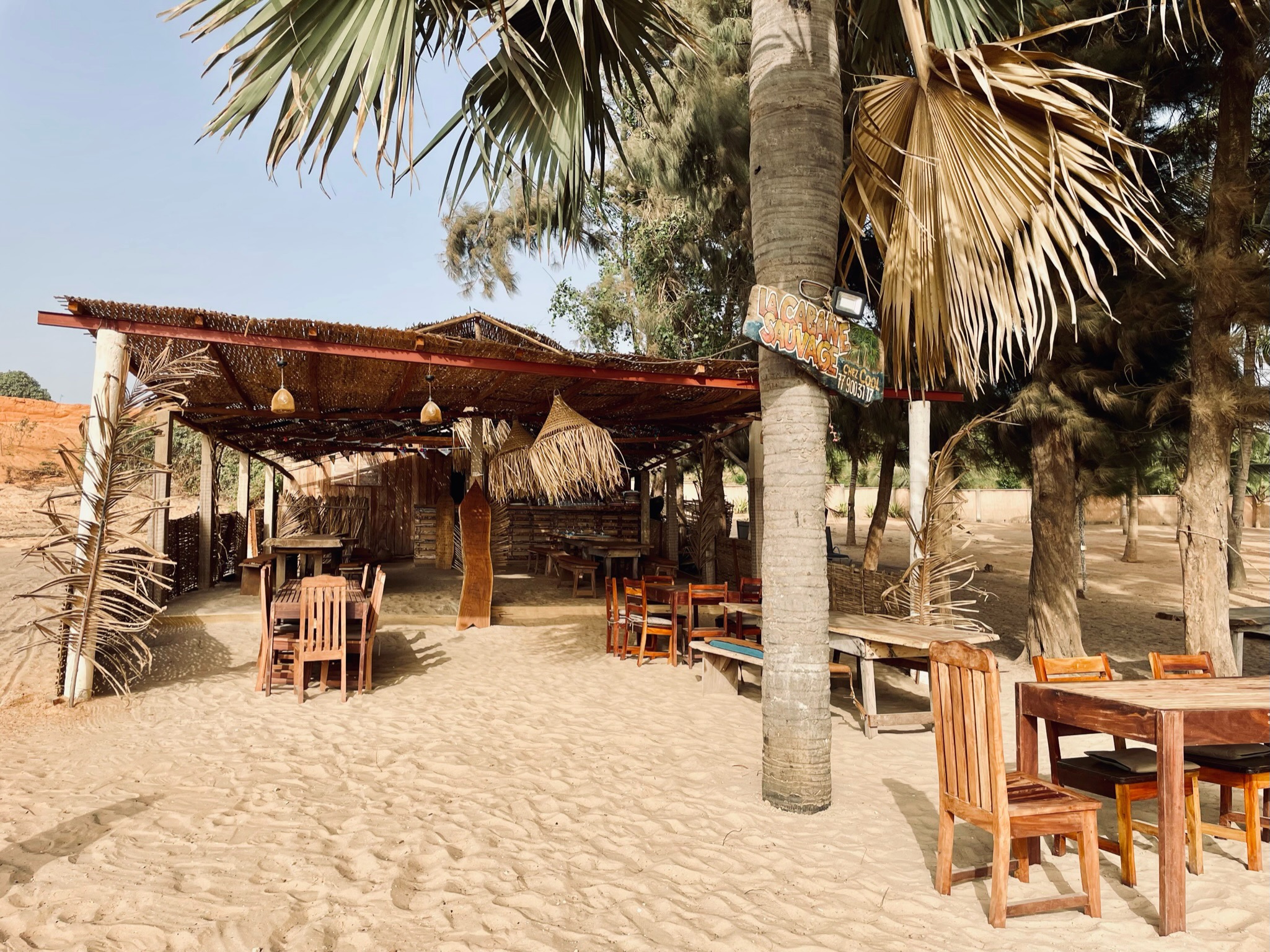
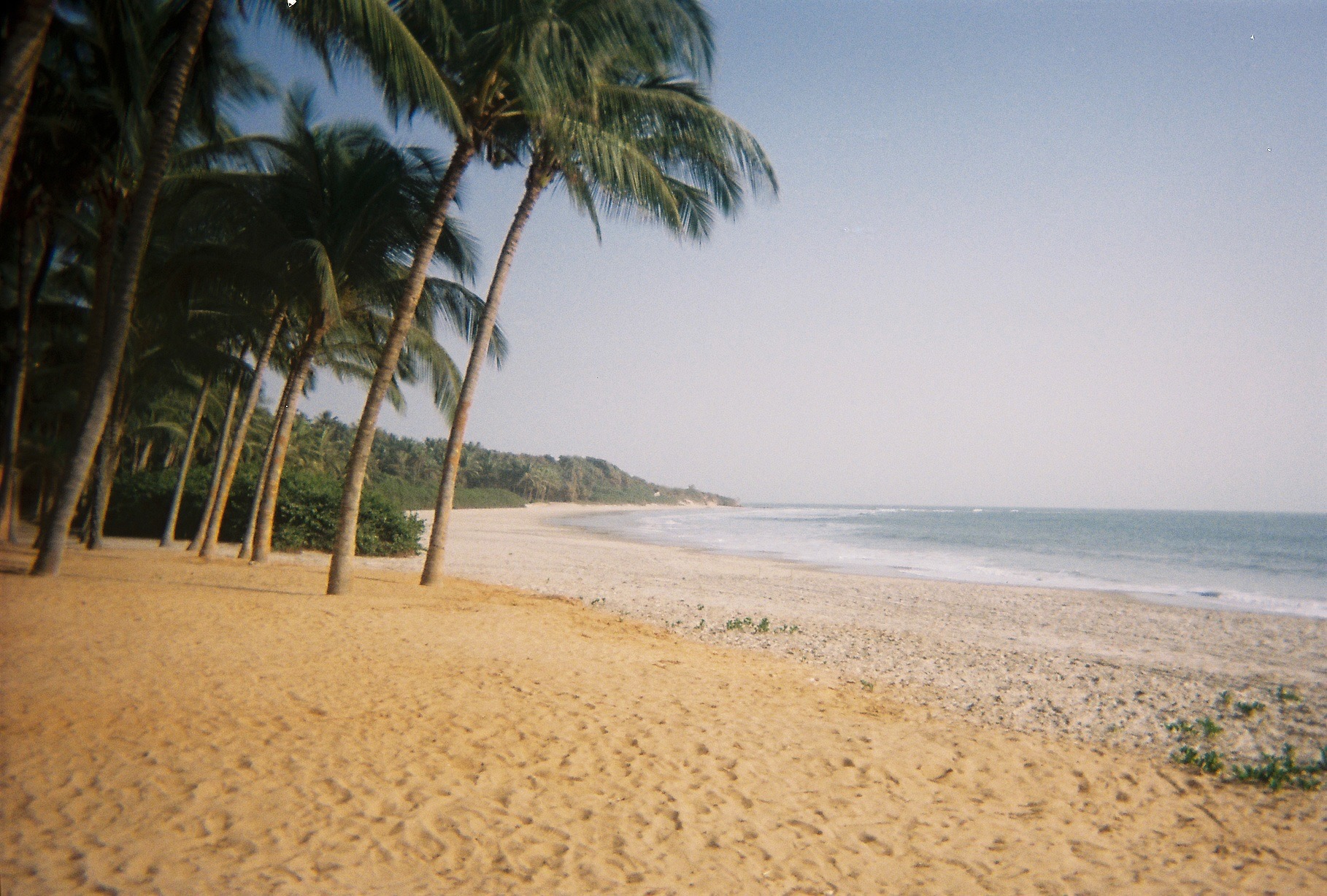
Accommodation in Basse-Casamance
For a wild nature break, Robinson Crusoé style, head to Auberge Kibalaou near Diembéring. Prices start around 20€ per person per night for a private hut with a double bed (or two single beds) and a bathroom, steps away from the beach, breakfast included.

For a comfy summer break close to the surf spots, restaurants, and commodities in Cap Skirring, book your stay at Keur Racine. Prices start around 15€ per night per person for a double room with a bathroom.

Casamance is full of hidden gems. Discover them here ︎︎︎
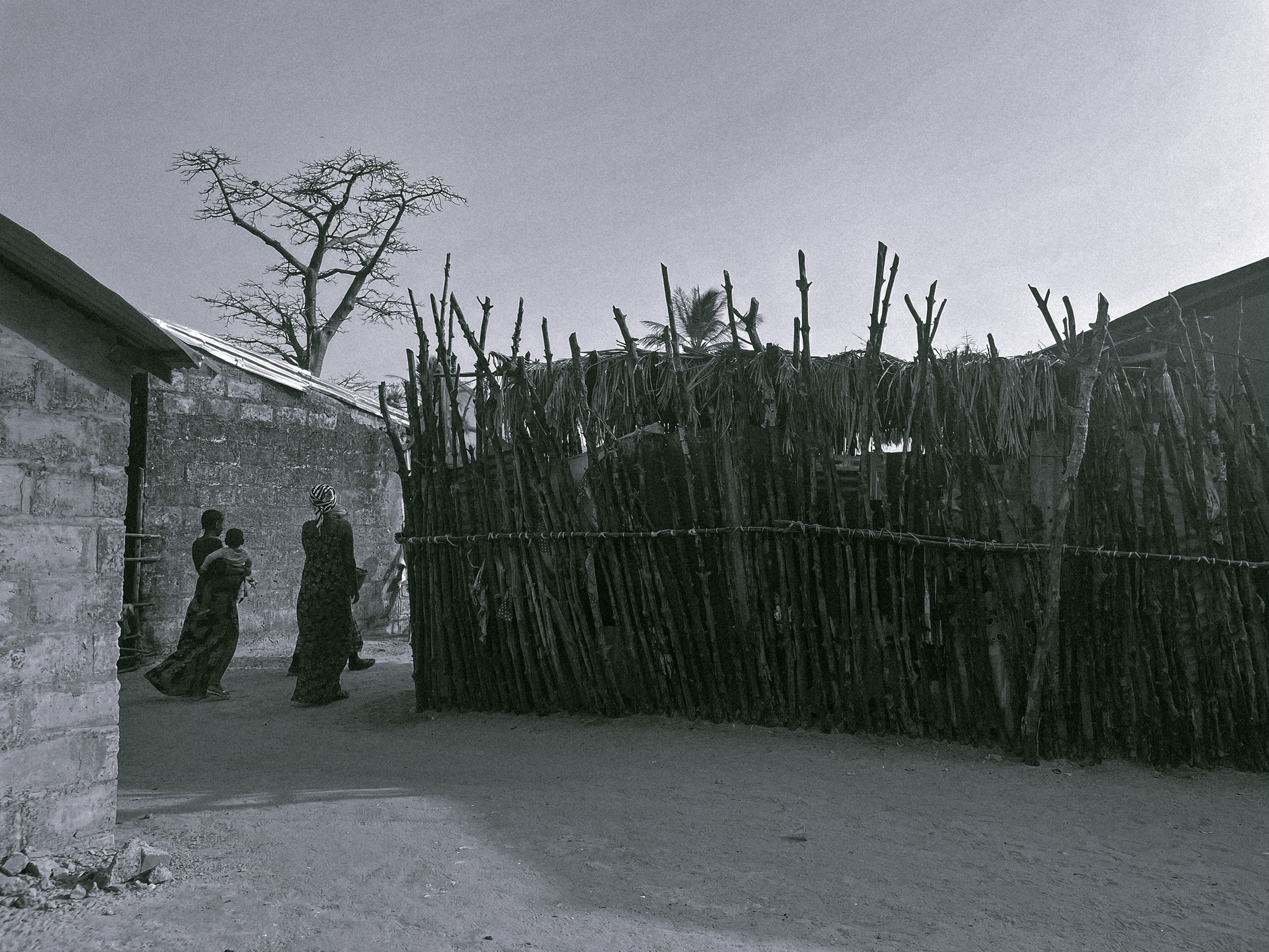
How to get to Cap Skirring from Dakar
The ferry's the best way to go regarding price/comfort balance. But it wasn’t working when I was there. This website contains useful information, you can probably WhatsApp them to find up-to-date information about the ferry.
The fastest way to get to Casamance is by plane. It takes around 45 minutes from Dakar to Cap Skirring and costs around 100€ with Groupe Transair. Heads up: expect delays.
If you're short on money, you can also opt for a bus or taxi ride and cross the Gambian border, but the opportunity cost is significant (you'll lose almost a day of travel). Keep in mind that accommodation in Casamance is much cheaper than in the Dakar region, so the cost of the flight might offset the difference.
Excited? Senegal has much more to offer than just surfing. Immerse yourself in the local culture and get practical tips on travelling safely in Senegal with this atypical 2-week itinerary.
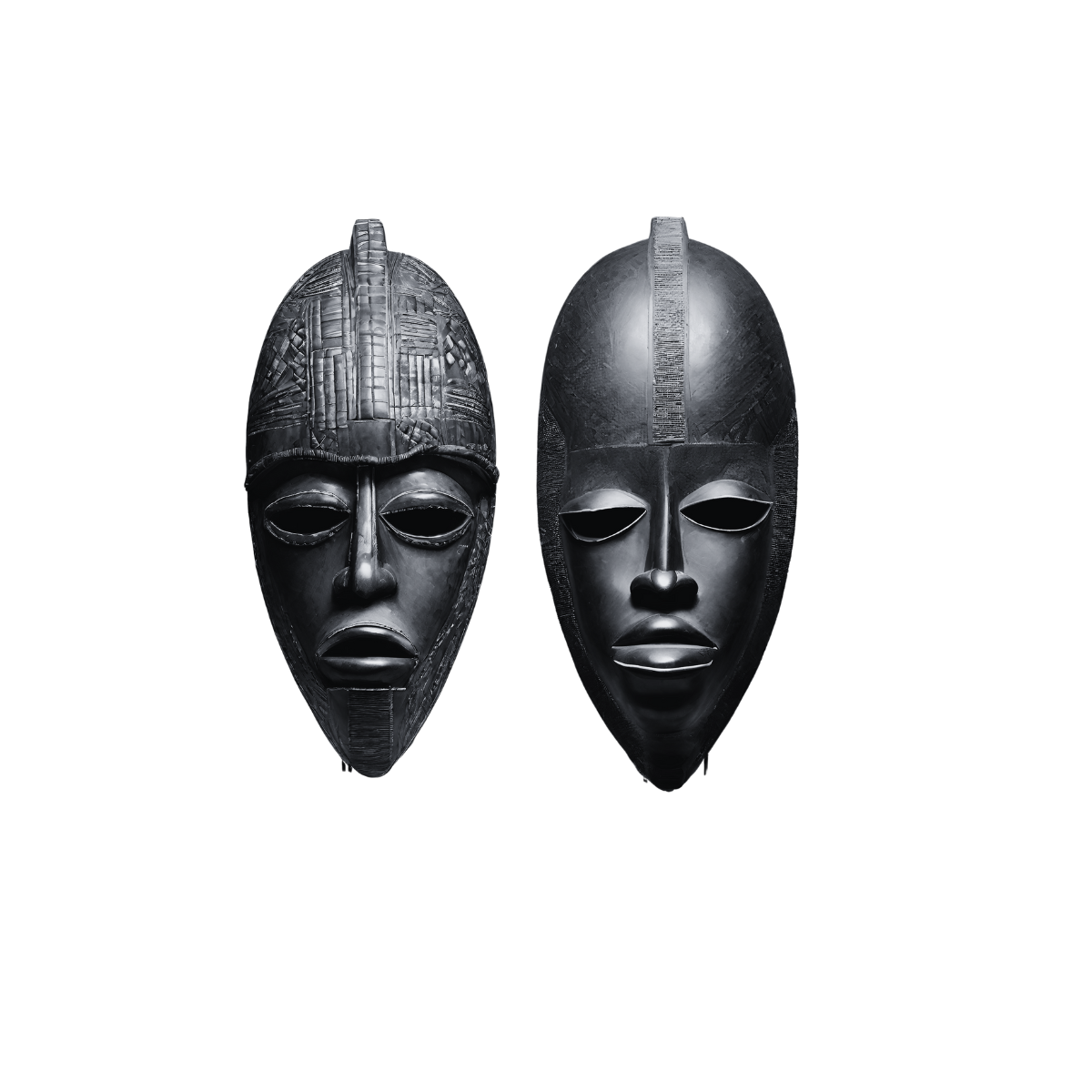
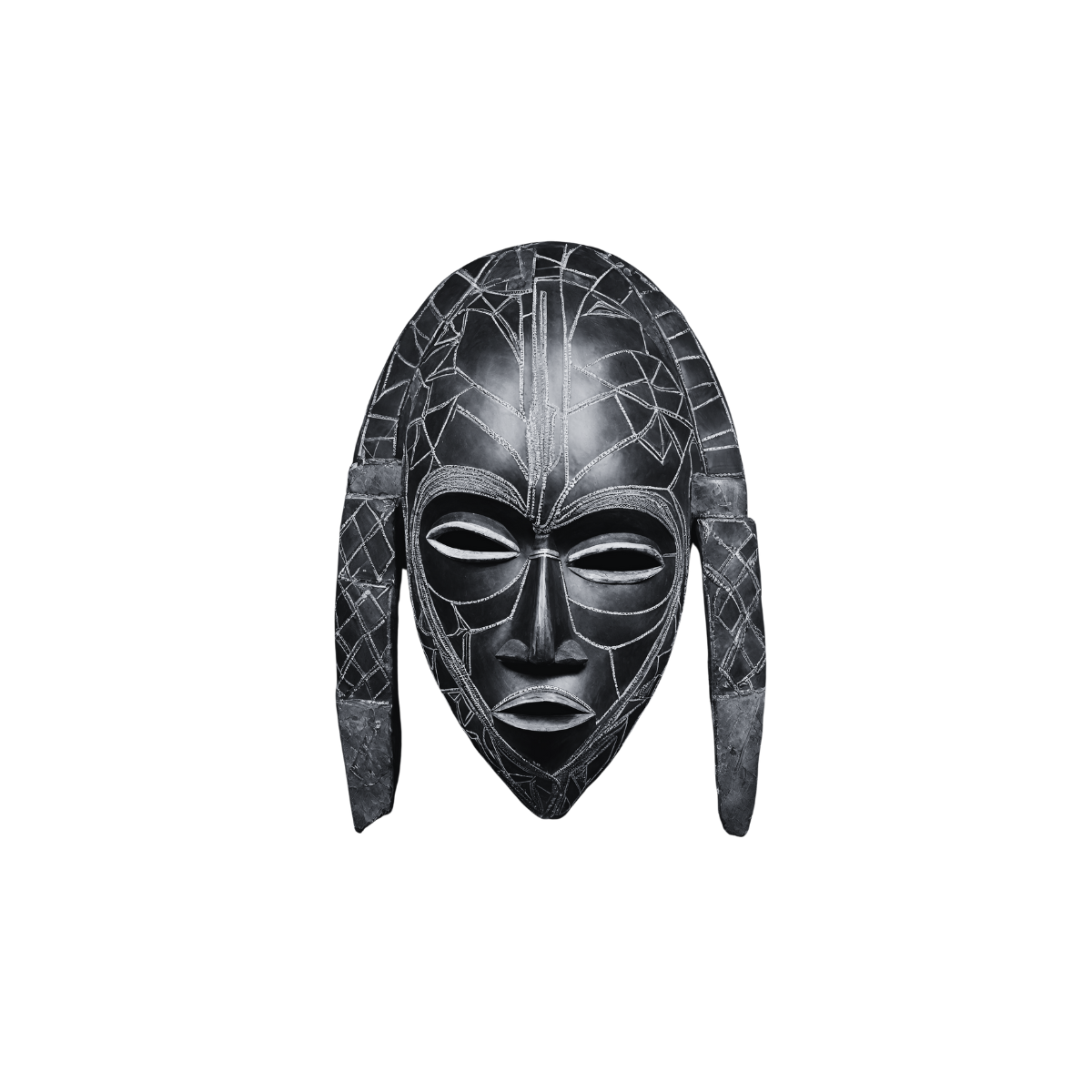
Fun fact: Although you'll see masks everywhere in Senegal's souvenir shops, they're not made locally; most of them come from the Ivory Coast and neighbouring countries.
